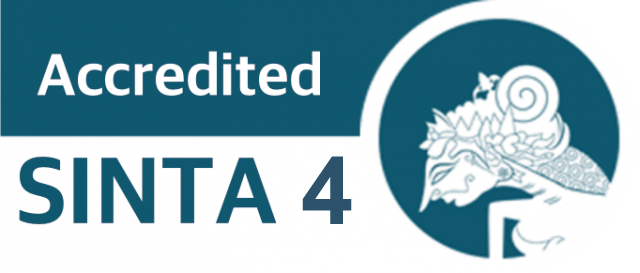The Influence of the Think-Pair-Share Cooperative Learning Model on Learning Outcomes on the Topic of Work and Simple Machines
DOI:
10.29303/jpm.v20i6.9966Published:
2025-10-04Issue:
Vol. 20 No. 6 (2025)Keywords:
Cooperative; Learning Outcomes; Think-Pair-ShareArticles
Downloads
How to Cite
Downloads
Metrics
Abstract
Science learning is often regarded as difficult by students due to the many concepts that are abstract and not well understood. Therefore, a learning model is required that can enhance students' academic performance. One of them is the cooperative learning model known as Think-Pair-Share (TPS), which encourages students to think independently, engage in paired discussions, and share ideas within their groups. This research aims to determine the effect of the Think-Pair-Share type cooperative learning model on the learning outcomes of simple machines and efforts in SMP Negeri 1 Kwandang. This study is an experimental research, utilising a one-group pretest-posttest Design. The sampling technique employed in this research is Cluster Random Sampling. The sample in this study uses class VIIIC as the experimental class, grouped through a random lottery. Data for this research were collected using a testing technique, which included normality tests, hypothesis tests, and n-gain tests. The analysis results indicate that the calculated values for all sample classes are greater than the tabulated values; thus, the hypothesis (H1) is accepted. The N-gain value of 0.80 indicates an improvement in learning outcomes that falls under the high category. The application of the Think-Pair-Share model, specifically for the material on simple machines and business, has rarely been researched before. This model has been proven to help students connect abstract concepts with real-life situations, fostering active participation in the learning process. Thus, the TPS type cooperative learning model has a significant impact on improving students' learning outcomes. This research also provides practical benefits as a basis for teachers to implement the cooperative model of Think Pair Share in learning to create a more active, effective, and meaningful learning atmosphere.
References
B. P. Abd. Rahman, S. A. Munandar, A. Fitriani, and Y. Yumriani, “Pengertian Pendidikan, Ilmu Pendidikan dan Unsur-Unsur Pendidikan,” Al-Urwatul Wutsqa: Kajian Pendidikan Islam, vol. 2, no. 1, pp. 1–8, Jun. 2022. [Online]. Available: https://www.academia.edu/download/91021639/7757
S. F. N. Fitri, “Problematika kualitas pendidikan di Indonesia,” Jurnal Pendidikan Tambusai, vol. 5, no. 1, pp. 1617–1620, 2021.
E. Suncaka, “Meninjau permasalahan rendahnya kualitas pendidikan di Indonesia,” Unisan Jurnal, vol. 2, no. 3, pp. 36–49, Mar. 2023. [Online]. Available: http://journal.an-nur.ac.id/index.php/unisanjournal/article/view/1234
B. P. Zain and R. Ahmad, “Pengaruh Model Kooperatif Tipe Think Pair Share terhadap Motivasi dan Kemampuan Komunikasi Matematis Siswa Sekolah Dasar,” Jurnal Basicedu, vol. 5, no. 5, pp. 3668–3676, Oct. 2021, doi: 10.31004/basicedu.v5i5.1408.
D. Harefa, “Efektivitas Model Pembelajaran Talking CHIPS Untuk Meningkatkan Hasil Belajar Siswa,” Tunas: Jurnal Pendidikan Biologi, vol. 4, no. 1, pp. 83–99, Apr. 2023, doi: 10.57094/tunas.v4i1.1011.
D. Supit, M. Melanti, E. M. M. Lasut, and N. J. Tumbel, “Gaya belajar visual, auditori, kinestetik terhadap hasil belajar siswa,” Journal on Education, vol. 5, no. 3, pp. 6994–7003, Mar.–Apr. 2023. [Online]. Available: https://www.academia.edu/download/110302738/1183
T. Nabilah and A. P. Abdi, “Faktor penyebab rendahnya hasil belajar siswa,” in Proc. Sesiomadika, vol. 2, no. 1c, 2020. [Online]. Available: https://journal.unsika.ac.id/index.php/sesiomadika/article/view/2685
L. Marlina and S. Sholehun, “Analisis Faktor-Faktor yang Mempengaruhi Hasil Belajar Bahasa Indonesia pada Siswa Kelas IV SD Muhammadiyah Majaran Kabupaten Sorong,” FRASA: Jurnal Keilmuan, Bahasa, Sastra, dan Pengajarannya, vol. 2, no. 1, pp. 66–74, Mar. 2021. [Online]. Available: https://ejournal.unimudasorong.ac.id/index.php/jurnalfrasa/article/view/854
A. Yandi, A. N. K. Putri, and Y. S. K. Putri, “Faktor-faktor yang Mempengarui Hasil Belajar Peserta Didik (Literature Review),” Jurnal Pendidikan Siber Nusantara, vol. 1, no. 1, pp. 13–24, Jan. 2023, doi: 10.38035/jpsn.v1i1.
I. N. Sukadana, “Model Pembelajaran Kooperatif Tipe Think Pair Share (TPS) Untuk Meningkatkan Hasil Belajar IPA Siswa SMP,” Jurnal Penelitian dan Pengembangan Pendidikan, vol. 6, no. 1, pp. 50–55, Mar. 2022, doi: 10.23887/jppp.v6i1.44596.
A. Rukmini, “Model Kooperatif Tipe Think Pair Share (TPS) dalam Pembelajaran PKN SD,” SHES: Conference Series, vol. 3, no. 3, pp. 2176–2181, Nov. 2020, doi: 10.20961/shes.v3i3.57088.
V. R. Kamil, D. Arief, Y. Miaz, and R. Rifma, “Pengaruh Penggunaan Model Pembelajaran Kooperatif Tipe Think Pair Share terhadap Motivasi dan Hasil Belajar Siswa Kelas VI,” Jurnal Basicedu, vol. 5, no. 6, pp. 6025–6033, Dec. 2021, doi: 10.31004/basicedu.v5i6.1744.
A. Agustina, “Peningkatan Prestasi Belajar Siswa pada Pelajaran Bahasa Indonesia Materi Menulis Teks Resensi dengan Menerapkan Model Pembelajaran Kooperatif Tipe Think Pair Share (TPS) di Kelas XI MIPA 1 SMAN 2 Bolo Semester II Tahun Pelajaran 2020/2021,” Jurnal Pendidikan dan Pembelajaran Indonesia (JPPI), vol. 1, no. 2, pp. 316–327, Nov. 2021, doi: 10.53299/jppi.v1i2.93.
B. Sadipun, “Penerapan Model Pembelajaran Kooperatif Tipe Think Pair Share untuk Meningkatkan Prestasi Belajar IPS Siswa Kelas V SDI Ende 14,” Inteligensi: Jurnal Ilmu Pendidikan, vol. 3, no. 1, pp. 11–16, Jun. 2020, doi: 10.33366/ilg.v3i1.1461.
P. K. Aftika, M. Murtono, and S. Utomo, “The Effectiveness of Think Pair Share Model Towards Class 4 Science Learning Outcomes,” ICCM Journal of Social Sciences and Humanities, vol. 1, no. 4, pp. 1–8, Aug. 2022, doi: 10.53797/icccmjssh.v1i4.3.2022.
S. Handayani, I. Anderson, and D. Sariani, “Penerapan Model Kooperatif Tipe Think-Pair-Share untuk Menyempurnakan Partisipasi Siswa pada Mata Pelajaran PPKN di Kelas,” Civic Education Perspective Journal, vol. 1, no. 1, pp. 1–10, Dec. 2021, doi: 10.22437/cepj.v1i1.16008.
T. Primayanti, A. H. Odja, M. Yusuf, T. Abdjul, N. E. Ntobuo, and R. Uloli, “The Effect of Cooperative Model-Integrated Huyula Local Wisdom Values on Mastery Concepts of Simple Machine Material,” Jurnal Pijar MIPA, vol. 20, no. 3, pp. 585–589, 2025, doi: 10.29303/jpm.v20i3.9027.
N. A. Hidayati et al., “The Effect of Cooperative Learning Model with Think Pair Share Type on Speaking Skill,” International Journal of Instruction, vol. 16, no. 3, pp. 935–950, Jul. 2023. [Online]. Available: https://e-iji.net/ats/index.php/pub/article/view/115
D. P. A. Junus, A. H. Odja, and M. Yusuf, “Pengaruh Penerapan Model Pembelajaran Kooperatif Tipe Think Pair Share Terhadap Hasil Belajar IPA,” Jurnal Luminous: Riset Ilmiah Pendidikan Fisika, vol. 6, no. 1, pp. 01–08, Jan. 2025, doi: 10.31851/luminous.v6i1.17401.
D. Ripo, M. Latjompoh, A. H. Odja, R. Uloli, C. S. Payu, and I. M. Hermanto, “Integrated Cooperative Learning Model of Local Wisdom Values on Mastery of Science Concepts,” Jurnal Pijar MIPA, vol. 20, no. 4, pp. 664–668, 2025, doi: 10.29303/jpm.v20i4.9026.
Author Biographies
Siskawati Akuba, Bachelor of Physics Education Study Program, Department of Physics, Facul1ty of Mathematics and Natural Science, Universitas Negeri Gorontalo
Abdul Haris Odja, Department of Physics, Faculty of Mathematics and Natural Science, Universitas Negeri Gorontalo
Trisnawaty Junus Buhungo, Department of Physics, Faculty of Mathematics and Natural Science, Universitas Negeri Gorontalo
License
Copyright (c) 2025 Siskawati Akuba, Abdul Haris Odja, Trisnawaty Junus Buhungo

This work is licensed under a Creative Commons Attribution 4.0 International License.
The following terms apply to authors who publish in this journal:
1. Authors retain copyright and grant the journal first publication rights, with the work simultaneously licensed under a Creative Commons Attribution License 4.0 International License (CC-BY License) that allows others to share the work with an acknowledgment of the work's authorship and first publication in this journal.
2. Authors may enter into separate, additional contractual arrangements for the non-exclusive distribution of the journal's published version of the work (e.g., posting it to an institutional repository or publishing it in a book), acknowledging its initial publication in this journal.
3. Before and during the submission process, authors are permitted and encouraged to post their work online (e.g., in institutional repositories or on their website), as this can lead to productive exchanges as well as earlier and greater citation of published work (See The Effect of Open Access).











